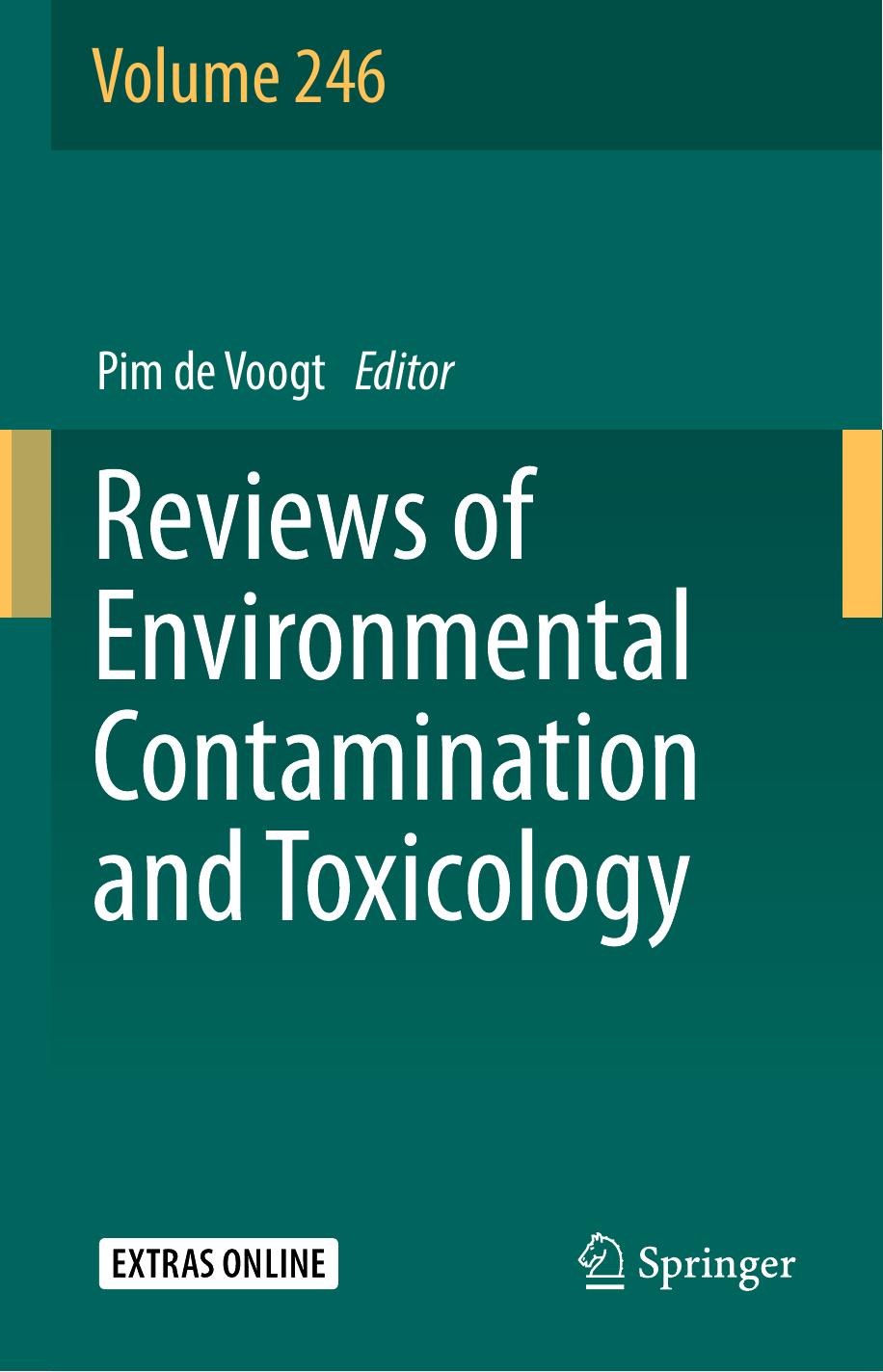Reviews of Environmental Contamination and Toxicology Volume 246 by Pim de Voogt

Author:Pim de Voogt
Language: eng
Format: epub, pdf
ISBN: 9783319977409
Publisher: Springer International Publishing
5 Discussion and Conclusions
Based on the literature we studied for this review, we conclude that it is most likely possible to distinguish between POP contamination that originates from different foraging areas, like landfills or marine environments, based on the congener concentrations and profiles in gull feathers. Environmental and internal concentrations were to a certain extent reflected by the concentrations in feathers of adult birds and nestlings. In addition, it is likely possible to distinguish between different foraging habitats by combining the analysis of the total POP concentrations with the determination of the ratios between more-accumulative and less-accumulative PCB and PBDE congeners. However, this conclusion was drawn from the combined evidence of different studies, concerning a wide variety of species and tissues. Although PCB and PBDE concentrations in feathers are to a certain extent related to internal tissues, caution is necessary when comparing different tissues. Therefore, more insight is required into the establishment of POP congener concentrations and profiles in feathers in relation to the source of POP contamination, before using this approach.
Several aspects of this approach should be taken into account. First of all, the age of the birds greatly affects the exposure, since nestlings are unlikely to come in direct contact with environmental contamination, and young adults need to develop a specialization. Moreover, the type and age of the feather determine to what extent the POP concentrations in the feather reflect recent exposure and internal contaminant concentrations. Hence, especially newly grown feathers of adults are very suitable for this analysis, as they reflect both recent exposure through internal sequestration of contaminants and external deposition of dust particles from contaminated foraging areas. Sampling shed feathers is not possible for this approach, because external contamination might be worn off. Secondly, individual specializations in foraging strategies can lead to a large variety of foraging habitats and degrees of POP exposure, due to the large diversity in POP bioavailability between foraging habitats and even specific foraging locations. Furthermore, preening, washing, and swimming also affect the outer POP concentration, and thus influence to what extent POP concentrations on the feather reflect environmental and internal contamination. Finally, the concentrations of PCB and PBDE congeners in feathers are determined by the local bioavailability and the chemical properties of the congeners. These complications should be taken into account when analyzing POPs in gull feathers to identify contamination source.
In order to gain more insight into the complications of POP analysis in gull feathers and to provide a stronger basis to implement this approach, more research is required. We advise to further investigate the differences in POP concentrations between recently grown and older feathers from adult or preadult gulls and to study the concentrations and composition of a wide variety of PCB and PBDE congeners inside the feather as well as on the outer surface, for example, conform the method of Jaspers et al. (2008). We also advise investigating the relation between the POP concentrations and congener compositions in preen oil and the concentrations and congener profiles in and on the feathers.
Download
Reviews of Environmental Contamination and Toxicology Volume 246 by Pim de Voogt.pdf
This site does not store any files on its server. We only index and link to content provided by other sites. Please contact the content providers to delete copyright contents if any and email us, we'll remove relevant links or contents immediately.
| Acoustics | Bridges |
| Earthwork Design | Environmental |
| Fire Science | Highway & Traffic |
| Hydrology | Remote Sensing |
| Seismic Design | Structural |
| Structural Dynamics | Surveying & Photogrammetry |
| Transportation |
Whiskies Galore by Ian Buxton(41866)
Introduction to Aircraft Design (Cambridge Aerospace Series) by John P. Fielding(33064)
Small Unmanned Fixed-wing Aircraft Design by Andrew J. Keane Andras Sobester James P. Scanlan & András Sóbester & James P. Scanlan(32743)
Craft Beer for the Homebrewer by Michael Agnew(18140)
Turbulence by E. J. Noyes(7935)
The Complete Stick Figure Physics Tutorials by Allen Sarah(7307)
Kaplan MCAT General Chemistry Review by Kaplan(6866)
The Thirst by Nesbo Jo(6826)
Bad Blood by John Carreyrou(6543)
Modelling of Convective Heat and Mass Transfer in Rotating Flows by Igor V. Shevchuk(6391)
Learning SQL by Alan Beaulieu(6208)
Weapons of Math Destruction by Cathy O'Neil(6139)
Man-made Catastrophes and Risk Information Concealment by Dmitry Chernov & Didier Sornette(5921)
Digital Minimalism by Cal Newport;(5661)
Life 3.0: Being Human in the Age of Artificial Intelligence by Tegmark Max(5473)
iGen by Jean M. Twenge(5366)
Secrets of Antigravity Propulsion: Tesla, UFOs, and Classified Aerospace Technology by Ph.D. Paul A. Laviolette(5309)
Design of Trajectory Optimization Approach for Space Maneuver Vehicle Skip Entry Problems by Runqi Chai & Al Savvaris & Antonios Tsourdos & Senchun Chai(5011)
Electronic Devices & Circuits by Jacob Millman & Christos C. Halkias(4907)
